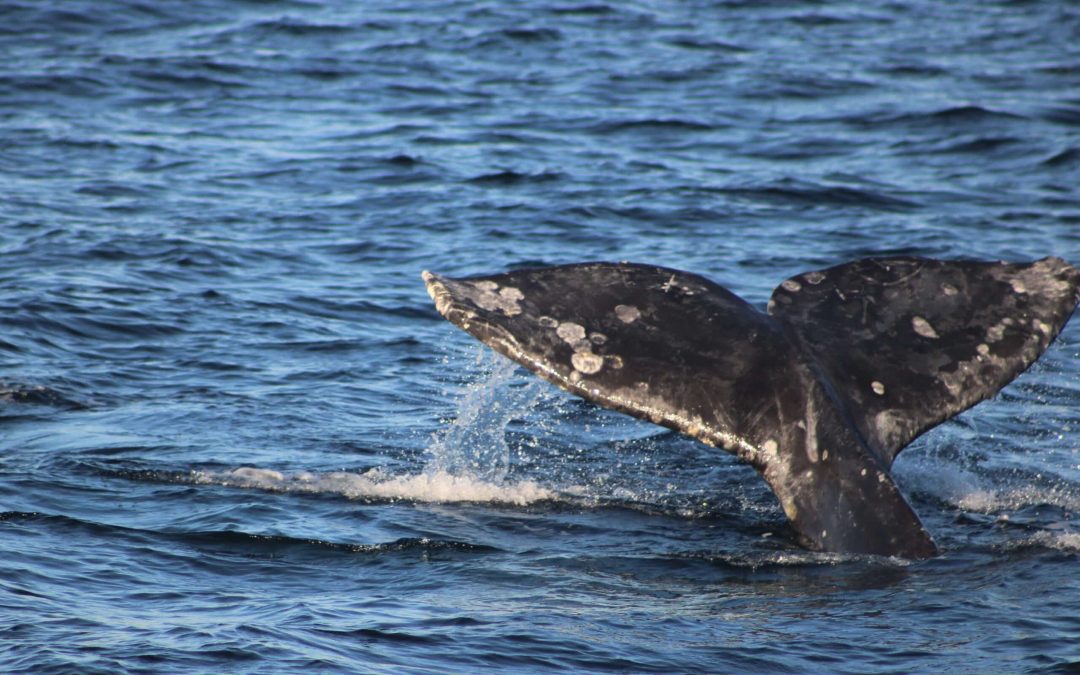The yearly gray whale migration is one of Earth’s most fantastic nature shows. Everyone who came to Mission Bay had a whale of a tale to tell. At about 10 a.m., a gray whale was seen along the Mission Bay entry channel off Mission Point Park, south of Mariner’s Point. Those who had gathered on the coast anticipating seeing the whale were captivated by it. The fascinating gray whale may grow to be between 40 and 50 feet long and more than 36 tons (72,000 pounds) in weight! Gray whales, as their name implies, have white spots on their dark gray bodies. The white spots represent scars, color variations, barnacles, and even whale lice. The whale’s weight may be increased by up to 400 pounds by the latter two.
What Time of Day Are Gray Whales Most Active?
Gray whales are often active at night, but have been seen to be more active at other times of the day, seasons, and activities. Gray whales are less active at night during the summer, since their prey is easier to find during the day.
Although they can be crepuscular, gray whales are never nocturnal. Thus, they are most active in the twilight period, which includes the time just before and right after sunset. During these twilight hours, the whales may converse with one another without being heard by predators or prey, since the water will absorb their voices. In the twilight hours, seeing predators or prey is also simpler since there’s still enough light to see, but it’s dark enough to notice shadows. Since whales’ primary food supply, plankton, needs sunshine to develop, they are more likely to be active during the day. During the summer months, when plankton is more abundant, whales are less active at night.
What Whales Are Migrating Near San Diego Right Now?
The San Diego whale viewing season is open all year. However, the greatest time to visit is between the months of December and April, when there are more than 20,000 gray whales in migration along the San Diego coast. All year, sightings of other species, such as blue and fin whales, are possible.
Blue Whales
If you missed the massive gray whale migration in San Diego in the winter or spring, don’t panic; blue whale season in San Diego spans from mid-June to September. Their primary feeding grounds are San Diego’s rivers.
Gray Whales
The twenty thousand gray whale migration from San Diego to Mexico, California, and Baja between November and January. Mid-January saw the highest concentration of gray whales, with up to eight of them passing through the San Diego region per hour.
Other Whales
Most humpback whales spend the winter in Hawaii, a tropical paradise. An alternate migration route from Alaska to Southern California is used by a herd of between 2,000 and 3,000 animals.
In addition, minke whales have sharp snouts and small, stocky bodies. The Californian pods are called residential whales since they live permanently there, whereas their Alaskan counterparts travel south.
How Long Is Gray Whale Migration Time?
In October, small bands of gray whales begin a two to three-month, 5,000 to 6,800-mile journey south as the northern ice creeps southward. From the Bering and Chukchi Seas, the journey ends in the balmy lagoons of Mexico’s Baja Peninsula.
The gray whale migration averages 75 miles per day of nighttime and daylight travel at a pace of 5 mph. Its 10,000–13,600 mile round trip is thought to be the largest yearly migration of any animal. They start to show up in the Baja calving lagoons around the end of December or the beginning of January. The three most visited lagoons are San Ignacio, Magdalena, and Laguna Ojo de Liebre.
The first whales to arrive are often solitary females looking for partners and pregnant mothers seeking shelter in the lagoons to give birth to their offspring. Most of the population arrived in the lagoons by mid-February to mid-March.
